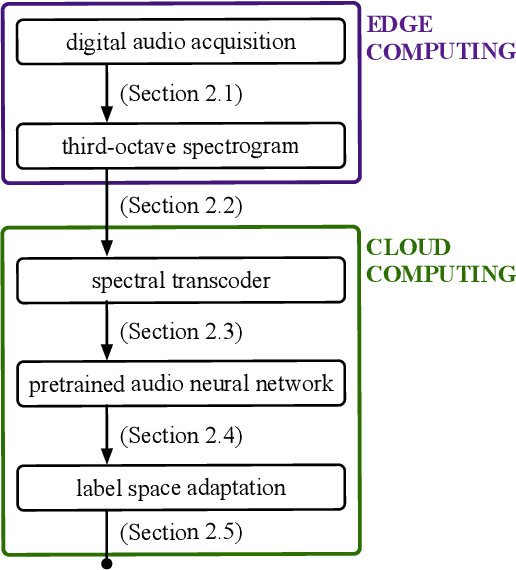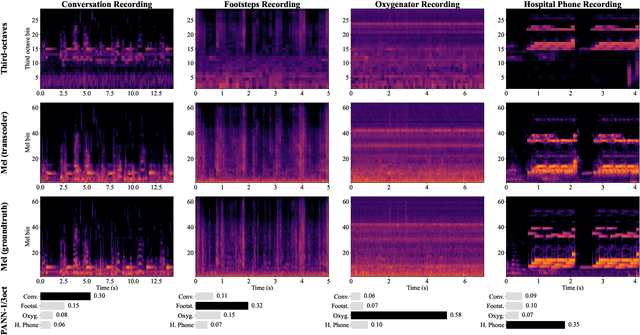Pierre Aumond
Machine listening in a neonatal intensive care unit
Sep 16, 2024



Abstract:Oxygenators, alarm devices, and footsteps are some of the most common sound sources in a hospital. Detecting them has scientific value for environmental psychology but comes with challenges of its own: namely, privacy preservation and limited labeled data. In this paper, we address these two challenges via a combination of edge computing and cloud computing. For privacy preservation, we have designed an acoustic sensor which computes third-octave spectrograms on the fly instead of recording audio waveforms. For sample-efficient machine learning, we have repurposed a pretrained audio neural network (PANN) via spectral transcoding and label space adaptation. A small-scale study in a neonatological intensive care unit (NICU) confirms that the time series of detected events align with another modality of measurement: i.e., electronic badges for parents and healthcare professionals. Hence, this paper demonstrates the feasibility of polyphonic machine listening in a hospital ward while guaranteeing privacy by design.
 Add to Chrome
Add to Chrome Add to Firefox
Add to Firefox Add to Edge
Add to Edge